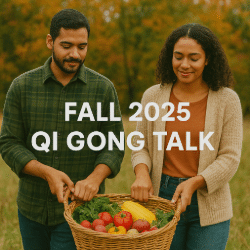Qi Gong Fall Equinox Talk – The Final Push
In this Fall 2025 Qi Gong talk, Master Mikel Steenrod explains the Equinox shift from summer’s yang to winter’s yin. He explores the final peak of yang, its effects on body and mood, and how to balance it with practice, activity, and gathering yin for winter stability.


